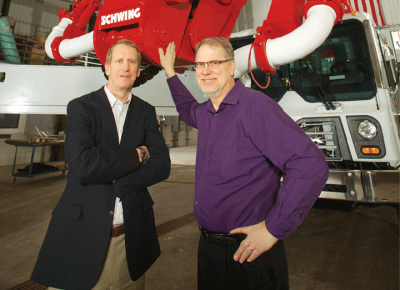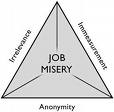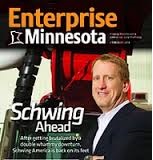Leadership Catalyst Blog

BRIC Countries Might Fall Short on Their Vision for Economic Growth
All Blog Posts, Business, Change, Human Capital, Strategy / 05.05.2014
In my last post, I summarized a great presentation from Vistage Speaker Herb Meyer about the dramatic global drop in birthrates and the implications for businesses in this country. In this post, I will be summarizing Herb’s comments and will add my own conclusions on the “BRIC” countries (Brazil, Russia, India, and China) that have often been cited as the emerging markets that will drive the global economy.
Brazil –Brazil is a real bright spot amongst the BRICs in that the country has a healthy birthrate of over 2.1, modernization is accelerating, and the middle class is growing by 10 to 20 million people per year. While you need Portuguese speaking resources to do business in Brazil, it is a great market to go after with existing US products and services tailored to the specific market preferences.
Russia – Russia is in trouble with a low birthrate of 1.4 and a rapidly aging population that lacks young people to replace the economic output of the baby boomers. The average Russian woman has had 6 abortions, which further reduces fertility rates. A couple of years ago, one of Russia’s provinces attempted to address the birth rate problem by declaring September 12th as “The Day of Conception” — closing its businesses at noon so workers could go home and “make another patriot” for Russia. A few years later, September 12th was proclaimed a national holiday called “The Day of Marital Contact. ” So far we haven’t seen a big spike in June birthrates. Russia has a lot of wealth coming from the energy sector, but their overall economy is not particularly diverse. Russia does not have a large growing middle class to whom U.S. products and services can be marketed.
India – India is the country to watch out for. India’s birthrate is 2.8 and significant portions of the population are well educated and speak English. Herb thinks India will blow past China in terms of economic growth because the country has a gigantic middle class society and the next generation will be even larger while China’s will be getting smaller.
India is not without problems. India has a terrible power grid, the roads are bad, and other facets of the country’s infrastructure are poor. India (and China) also has a huge gender imbalance because of their culture’s strong preference for boys. Statistically, on a global basis, the ratio of boy babies to girl babies is 1.03. In India and China, with the ability to now determine gender in the womb, that ratio is 1.18. In some provinces it is as high as 1.3. This means is that there are 100 million boys growing up in India and China that will never find wives. Both countries have now made it a crime for an obstetrician to disclose the sex of an unborn child, and they are closing down the sonogram clinics that have proliferated in local strip malls.
These actions have not eradicated the problem in India. Mohammad Hamid Ansari (the former President of India) recently disclosed that since making it a crime to disclose the sex of an unborn child, over 7,000 newborn girls are being murdered by their own parents every day. India has set up a network of refuges where parents can now drop off their newborn daughters rather than killing them in hopes of addressing this problem.
China – What China has done in the last couple of decades to bring its people out of poverty is nothing short of amazing, but the country has hit an economic wall. The value proposition that has driven China’s growth is twofold: China makes things happen and they provide cheap labor.
Before, China could put up a new factory in 6 months whereas in the U.S. it could take 5 years to do an environmental impact statement. China simply relocated the peasants who were in the way. It is more difficult to do that to the educated middle class. The level of unrest and protest in China today is greater than it was in the Soviet Union just before the fall of the Iron Curtain. China can’t make things happen nearly as quickly as they used to.
Cheap labor is also going away. China has had a 1 child per couple policy for decades and consequently its birth rate is at 1.1 and it is the most rapidly aging large country on earth. For the first time in history, the Chinese workforce declined last year, and scarcer labor is dramatically increasing labor costs. American countries are taking their manufacturing to cheaper labor sources such as South Vietnam, Bangladesh, and Burma, or even bringing it back to the US.
Affluent Chinese are starting to buy up real estate from Seattle to San Diego as a place to go if the situation in China deteriorates beyond their comfort. Herb feels another part of China’s contingency plan is to send their kids to American schools so that if they need to leave China, they can come into the US under their kids’ student visas. This partially accounts for the large increase in Chinese students in American universities and even high schools.
In China, the gender gap because of the cultural preference for boys is expected to be about 200 million men by 2015. An entire industry is springing up to take planeloads of Chinese men to Ho Chi Min City, Rangoon and other Asian cities to meet potential wives. Aging parents are driving this trend because in most Asian cultures, it is the daughters and daughter-in-laws who look after the elderly. In China there are 165 million elderly people with no pensions, no health insurance and no daughters. By 2025 there will be 250 million old people in China. This is why China is changing the one child per family law, but it will take decades to see a difference. China, in Herb’s opinion, will not be taking over the world.

2010 BRIC Summit – The global excitement about the BRIC economic growth potential has faded since the summit.
Bottom line: Brazil and India, with their healthy birthrates and burgeoning middle class populations, will be fantastic markets for American products for decades to come. Continue to market to China’s enormous middle class, but recognize that it will be shrinking. Demand for products and services to accommodate the needs of its rapidly aging population will be exploding, if they can find a way to pay for it. Russia does not appear to be a great new market for American countries given its low birth rate and rapidly aging population.
Many thanks to Herb Meyer for sharing his knowledge with my Minnesota Vistage Groups. Herb’s opinions are based on statistics from the World Health Organization and backed by a decorated career within the US Intelligence community. I believe they are very relevant to any company considering doing business in BRIC countries.
Read More >>
Global Macro Economic Trends that will Impact your Twin Cities Business
All Blog Posts, Business, Change, Strategy / 02.04.2014
Vistage Chairs bring in a wide range of experts to address our CEO and Executive Peer Groups in Minneapolis every month. Our goal as Vistage Chairs is to increase the effectiveness of CEOs, and one way we do this is by bringing in a speaker on a very specific topic such as how to attract and hire top talent. We will also, bring in speakers who will help our Vistage members take a longer, big picture view of their businesses. In these instances, we encourage executives to look up and scan the radar for what they will be facing in the years to come in addition to focusing on the short-term turbulence they are experiencing.
Herb Meyer, the former senior CIA executive in the Reagan Administration was one such speaker. Since leaving The Agency, Herb has applied his intelligence gathering skills to collecting important data on economic, social, political, and population trends that will dramatically impact our businesses.
Herb presented three megatrends to watch out for and their implications for growing your business.
1. The world is becoming modernized. Technology is sweeping the planet at an amazing rate. Cell phones, the internet, social media, TV, and satellites are connecting people to what is happening throughout the world. Young people throughout the world now have cell phones, and Ipads and can download books, movies, TV shows, and on-line courses from anywhere. Agricultural breakthroughs mean that for the first time in world history, very few people are starving in the “Modern World”, and a major problem for poor people in these countries is obesity.
2. The world is becoming rich. Not only are Millionaires multiplying all over the globe, 50 – 100 million people are coming out of poverty every year. (Non-poverty is defined as having enough to eat, children being inoculated, at least 1 parent working, and having some disposable income.) This means the creation of a large middle class, with 50 – 100 million new customers every year who want the modern conveniences they see on TV and online. The emerging middle class may not be located where we would like them to be, so our challenge is to innovate clever, inexpensive, and green products to serve them.
3. The modern world is becoming old. Populations throughout the world are aging at an alarming rate at the same time as birth rates are plunging. Let’s look at the statistics:
A birthrate of 2.1 births per female is needed to sustain a population, and when birthrates dip consistently below 1.3, a population is on a suicide trajectory. In Europe, the average birthrate is 1.5, and the modern countries that are aging the fastest are Germany, Italy and Spain, all of which have birthrates at or below the 1.3 threshold. In Germany, 30% of all women and 40% of all college educated women are childless. If nothing changes, by 2040, 61% of their population will be over the age of 55. In Italy and Spain the birthrate is at 1.2 and heading for 1.1, and in 20 years they will lose 20% of their workforce. The story is the same in many Asian countries, including Japan, China, and Singapore. In Japan the birthrate is also 1.3, but the population is aging faster. In 20 years, 1 of 5 of their people will be over 70 years old, and in 30 years, the Japanese population will shrink by 60-70 million.. The population is literally dying out, and the people will not tolerate immigration to replace their young people.
In North America, the U.S birthrate is 2.1, (the Anglo birth rate is 1.8 and the Hispanic birthrate is 3.2) and in Canada the birthrate is at 1.5. Finally the birthrate in Mexico is slowing but it is still a healthy 2.6 – 2.7, which means a huge emerging middle class.
By far, the fastest growing populations are in the Muslim world, where birthrates range from 2.6 to 6.8. Two notable exceptions are Turkey and Iran, where birthrates are plummeting.
The implication is that there is a huge growing market for products and services for an aging population with fewer and fewer young people to support them. In Japan, for the first time in history, adult diapers are outselling baby diapers, and a company has invented a robot for bathing people. In Germany, BMW has built a new plant designed for older workers – brighter lighting, non-slip floors and new tooling that requires less physical strength. In Canada, homes are being retrofitted with colored strips across steps and shower ledges to help the elderly with failing depth perception see them and avoid debilitating falls in the home that often result in broken hips.
One of my Minneapolis Vistage members, who manufacturers high pressure hoses for filling industrial gas and oxygen bottles, is seeing a huge increase in demand in the home oxygen tank market. There is huge growth ahead for businesses that figure out how to better serve the wealthy aging population with their existing and new products and services.
So what are these huge business growth opportunities?
1. Look for better ways to meet the needs of an aging world population with fewer young people to take care of them.
2. Adapt your products and services to meet the needs of the 50 – 100 million new customers in the emerging global middle class through the prism of clever, inexpensive and green.
3. As one billion people cross the poverty line in the next couple of decades, there will be tremendous opportunity in the areas of energy, food (especially protein), infrastructure, education, and entertainment. Coincidentally, these are 6 industries in which the U.S. leads the world.
So what about Brazil, Russia, India, and China? Next week’s post will outline the unique challenges and opportunities facing these countries, and why China and Russia are hitting the wall.
Read More >>
Schwing USA charges back – 10 Lessons for leveraging Chapter 11
All Blog Posts, Change, Strategy / 19.03.2014
A hallmark of an effective CEO Peer Group is having members with a diverse set of experiences. A CEO mix featuring a variety of industries, company sizes, and life cycle maturity stages creates a brilliant wealth of knowledge that members can draw on to assist in whatever challenges they are currently facing. As some Vistage members have quipped, it’s nice to have the opportunity to learn from someone else’s mistakes rather than to make them all yourself.
My Minneapolis Vistage groups include several Fast50 members, a Power50 member, the 2013 Manufacturer of the Year and a perennial “Best Place to Work” winner. CEOs are going to have a lot of ups and downs in their careers just like anyone else, and CEOs need a forumthat can help us through the bad times as well as the good. Our CEO Advisory Board is fortunate to include Brian Hazeltine, CEO of Schwing America, who was featured last month on the cover of Enterprise Minnesota for leading his company back from the brink of financial ruin.
Read Schwing Ahead in the February issue of Enterprise Minnesota® magazine.
As Lynn Shelton, Enterprise Minnesota’s Director of Marketing & Communications, writes in their February 21,2014 e-Trends newsletter:
“In September 2009, just two weeks after taking over as CEO, Hazelton brought the company into Chapter 11 bankruptcy protection, just one more move in what our profile called “an almost surreal litany of recession-related poor timing and bad luck that forced the nation’s leading manufacturer of concrete pumps to spend more than four years in a corporate bob and weave,” waiting for the housing industry to bounce back.”
During the housing boom ten years ago Schwing was racing to keep up with demand. At its peak, Schwing grew to 680 employees and ran its 400,000 square-foot facility in White Bear Township 24/7. When the construction industry bottomed out, Schwing had to lay off close to 600 employees and close its in-house paint operation, welding shop and fabrication facility. The story of how Hazelton and his team nimbly managed through, creatively leveraging the Schwing brand and keeping close to its customers (who were also enduring a difficult time) is an inspiration.
Here are few key lessons Brian Hazelton of my Minnesota Vistage group can teach us about surviving a “perfect storm” and repositioning his company to thrive and double next year.
1) Believe in your product strongly enough to fight for it even when the universe seems to be turning against you
2) Beware of unrelated but compounding converging trends
3) When there is a will there is a way – the drive to survive can move mountains
4) Be willing to take on multiple jobs when times are tough
5) Don’t be afraid to reinvent yourself
6) While Chapter 11 is nobody’s first choice, it can be the best strategic option when you are not left with many paths forward
7) Don’t forget about your customers even when they aren’t buying
8) Help your customers sell your product
9) If you don’t tell your story when times are tough, somebody else will and odds are you won’t like their version as well
10) Paying it forward can bring about payback – loyalty is a form of Karma
Read More >>
5 Keys to Overcoming the Challenges of Discontinuous Innovation
All Blog Posts, Change, Vistage Peer Groups / 20.02.2014
The past decade is littered with cases of companies who were on top of their industry one year and then suddenly found themselves struggling to stay alive. Blackberry, Borders, and Blockbuster are three that come immediately to mind. When you read about them in the media or in HBR case studies, it is hard to fathom how they missed the new technology that put them on life support, if not out of business. The phrase “discontinuous innovation” refers to a paradigm shift in technology and/or the market structure of an industry. We can learn a lot from the examples of CEOs who have successfully navigated these disruptive changes.
Minneapolis Vistage member Jay Coughlan offers some insights into why change and organizational transformation is so difficult. He has led his company, XRS through 2 major transformations since 2007, and his story is summarized in a recent Minneapolis Star Tribune article. Below is the quote from the article that provides the background story.
“In 2009 the company, then called Xata, acquired Toronto-based Turnpike Global Technologies, which provided a trucking compliance solution that ran through a handheld device. Truckers and their companies must comply with myriad regulations, from logging hours driven and duty status to tracking state fuel taxes. The XRS service also helps improve performance by keeping track of maintenance schedules, fuel economy and more.
That $20 million acquisition would be the foundation of a complete shift in the company’s approach to providing logistics for the trucking industry. Xata used to be primarily a hardware company that installed a communications dome on top of truck’s cab and then tore apart the dashboard for a four-hour installation of a fixed-panel display and keyboard.
Now, with its mobile technology, it takes about 10 minutes to connect its XRS relay device and sync it with a wide variety of Android and Windows Mobile smartphones, rugged handheld devices and tablet computers that will automatically transmit vehicle and operator data directly to a management dashboard in the cloud. “
In hindsight, this migration from hardware to mobile technology seems like a no brainer, but with discontinuous innovation, there were three powerful stakeholders that made such a transformation almost impossible.
Existing customers – XRS had a large customer base on their legacy hardware with huge sunk costs who wanted them to continue to support that system. They are less than sympathetic to the need for XRS to shift resources from supporting their legacy systems to the development of the new technology.
Shareholders and Investors – Migrating to mobile required a change in business models from a large upfront equipment sale and installation to a subscription model with no upfront revenues. Moving from one to the other means a huge decline in revenues and profits over a year or more, which translates to meager cash flow, and short term losses. Even when you forecast it on paper, it is difficult to maintain the commitment of your board and investors when you are in the middle of it, especially when there is no guarantee of long term success.
Company Leaders and Employees – Migrating from a hardware solution to a software solution, to ultimately a mobile solution required totally different skillsets in engineering, software development, and sales and was only possible with a 70% turnover of employees. Without a clear vision and a burning platform for change it is impossible to drive the changes required to support this kind of transformation.
Based on many monthly coaching sessions and CEO peer meetings with Jay, I have identified 5 Keys that enabled XRS to overcome stakeholder resistance.
- Communicating a compelling vision of the power of being a first mover in his industry with mobile technology. The message needs to be simple and re-communicated over and over to remind people where we are going.
- Creating a “burning platform” (sense of urgency) around how iPads, tablets, and smart phones were discontinuous innovations that could render their current system obsolete – XRS needed to make the leap or be left in the dust. Again, given the dramatic changes required, people need to understand and be reminded that there is no going back to the old technology.
- Developing realistic quarterly forecasts showing the revenue lines of their two platforms and when the lines would cross and then producing quarterly results that are consistent with the forecast. This is especially difficult because there is no trend data to rely on and forecasts need to be frequently updated.
- Hiring new leaders that are equipped to drive the changes required in sales, technology, and operations. These new leaders need to represent the new culture you are creating and also integrate well with the former leadership team members that are still on board.
- Identifying the three critical priorities every quarter to drive the organization through the next phase of change. These priorities can change as you encounter bumps in the road along the way, and these changes need to be clearly communicated to all stakeholders.
Jay’s leadership in overcoming stakeholder resistance during XRS period of discontinuous innovation is an excellent example of the courage and resiliency required for CEOs to lead their companies through major transformation. I really enjoy having Jay in my Vistage CEO Advisory Group and his insight is extremely valuable to other group members who may be facing a similar rocky road. Vistage provides an excellent forum for CEOs to learn from other CEOs who have been where they are going.
Read More >>

CEOs – Quit While You Are Ahead?
Change, Vistage Peer Groups / 07.01.2014
Long tenure is often perceived as a measure of success and a sign of CEO competence. But does the data bear this out? Not according to this INC. Magazine article “CEOs: Why You Should Quit While You’re Ahead” which offers some insightful findings about CEO tenure. The study focuses primarily on large companies but even in small to midsize privately held companies, can the CEO stay too long?
Several experts maintain that the CEO is on a steep learning curve during the first couple of years but will really hit his or her stride in years 3-5. After 5 years, however, the company’s results begin to decline. According to Michael Jarret at INSEAD, “The team’s research found that when a CEO stays over five years, customer relationships, product safety and quality, and financial returns will all decline.”
One reason for the decline is that you are more likely to settle for the status quo. “After the initial rush of enthusiasm and energy, established routines and networks can smother the drive for innovation,” Jarrett writes. A second reason for the decline is that you stop learning. “… as CEOs accumulate knowledge and become entrenched, they rely more on their internal networks for information, growing less attuned to market conditions,” the authors say.
One way to avoid this decline is suggested in the title of the article: CEOs: Why you should quit while you’re ahead. In certain situations a CEO choosing to step down may very well be the wise or heroic thing to do. On the other hand, installing a new CEO every 5 years is not practical for many companies, especially small and medium size businesses. And why would someone who has persevered through many challenges and worked hard to rise to the top leadership role want to quit?
Quitting your job as CEO will certainly bring about change for your company (for better or worse). Another path forward is to join a CEO Peer Advisory Board of independent CEOs who will continually challenge your thinking, push you out of your comfort zone, and keep you externally focused and learning.
Read More >>
Predicting & Overcoming Business Growth Barriers
All Blog Posts, Business, Change, Vistage Peer Groups / 18.11.2013
I recently met with a successful entrepreneur who had grown his company to over $4.5M in revenues in just a few short years. He knew he needed a CEO Peer Advisory Board to help him take his company to the next level, but didn’t see how he could squeeze in a monthly peer group meeting in his already packed agenda.
He found himself starting work at 3:00 am to work on client projects, meeting with up to 10 customers a day, and then doing more project work in the evenings.
Like many business owners of companies with less than $5M in revenues, he was so busy selling, serving customers, and putting out fires, he felt he needed to clone himself before joining a group.
It is often said, “What got you here, won’t get you there,” and nowhere is this truism more evident than when trying to profitably grow your company.
Most entrepreneurs struggle with very predictable barriers as they grow their companies from $1M in revenues to $10M and beyond.
Read More >>“Change is Good, You Go First”
All Blog Posts, Change / 01.05.2013
“Change is Good, You Go First…so goes an old Dilbert Cartoon. So, just how do we “go first?” The essence of being a manager has been eloquently summed up by Former Porsche CEO and longtime Vistage Speaker Peter Schutz who reminds the Vistage groups he visits that “Managers are unnecessary, until something changes.” Things can always be counted on to change but people seem genetically programmed to resist doing anything about it; including CEOs who have a tendency to be human themselves.
What do we do about it? Another Vistage Speaker, Andrea Simon, examines Why We’re so Afraid of Change, in a recent Forbes article. She offers some handy tips and practical tools that CEOs and Senior Executives can use to get everyone on offense instead of defense. If you want the organization to change, you need to start with yourself. Don’t just demand that your people come up with new ideas—broaden your perspective by getting out of your box—a.k.a. your office. Since a lot of innovation comes from outside your industry, don’t just go to your industry trade show, go to other industry trade shows. Or join a CEO Peer Group with successful executives from multiple industries.
Another idea is to visit not only your current customers, but people who you would like to have as your customer. Leverage your CEO title to meet with CEOs and other senior leader’s in those companies. One of my most successful Vistage group members totally transformed her business by having several meetings with big potential customers to ask them about their unmet needs and problems that they were having with all of their suppliers that if changed, would transform their business. She listened and dramatically changed the way they do business, which in three years transformed them from being at the bottom of the pack to the leading supplier of her type in her market.
“Going first” when it comes to managing change is one of your most important jobs as a CEO.
Read More >>Be a Leader: “Take the Blame”
All Blog Posts, Change / 26.04.2013
 From childhood, most of us try to avoid responsibility for negative outcomes because of the fear of punishment that might accompany it. This thoughtful article suggests that “Contrary to what you may feel in the moment, taking the blame is the power move, strengthening your position, not weakening it.”
From childhood, most of us try to avoid responsibility for negative outcomes because of the fear of punishment that might accompany it. This thoughtful article suggests that “Contrary to what you may feel in the moment, taking the blame is the power move, strengthening your position, not weakening it.”
Rather than making you vulnerable, taking the blame for something that you are reasonably associated with makes you appear trustworthy and responsible, and changes the mood in the room from pointing fingers to one of constructive problem solving. As a senior leader, taking the blame for things you are remotely connected to in a meeting reinforces a culture of accountability and “no excuses”.
Take a few moments and explore “Why You Should Take the Blame” …..and share it with your team as a tool for tearing down silos between departments.
Read More >>“Immeasurement”: The Third sign of a Miserable Career Transition
All Blog Posts, Change, Motivation / 29.05.2010
This is the final post in a three part series summarizing a presentation I recently gave to the CPI Executive Forum on how to keep yourself motivated, engaged and positive as your job search extends from weeks, to several months, to over a year. I have been applying Lencioni’s “Three signs of a Miserable Job” paradigm to career transition, because people often describe transition as one of the most miserable jobs they have ever had.

Avoid being miserable like Toby durring your career transition!
Having covered how to avoid “Anonymity” and “Irrelevance” in my previous two posts, I will now focus on “Immeasurement”, a term Lencioni coined for jobs in which:
- Clear means of assessing progress are lacking
- Measures are outside of your control
- Measures don’t tie directly to purpose
One key to avoiding “immeasurement” in a career transition is effective individual time management. Unfortunately, for many executives, this skill has atrophied with the reliance on executive assistants to schedule their time and when Franklin Planners were replaced by Microsoft Outlook. They need to get back to having their daily activities and calendar being driven by their meaningful objectives and placing a weekly planning and review session on their calendars to “count” their successes and plan their next week’s priorities. Otherwise, it is far too easy to drift and waste time on low yield activities.
 “Take Back Your Life!” by Sally McGhee and John Wittry is a great book that shows how to implement David Allen’s “Getting Things Done” approach to time management using Microsoft Outlook. The authors walk you step by step on how to configure MS Outlook into a single dashboard that organizes your tasks, your calendar, and your files around your objectives, and provides a control panel on one screen that enables you to track your progress. One of the tips I find particularly helpful is the use of categories by which you can color- code tasks and appointments according to objectives. (For example, use green for networking meetings, teal for networking calls, blue for interviews, and red for on-line marketing activities.) In addition to meetings, also schedule time blocks for completing specific tasks on your calendar. (E.g. Outbound calls and emails to set up networking meetings, LinkedIn search engine optimization (SEO), Internet research , blog posts and tweets.) By scheduling and color-coding all of your tasks as well as your meetings on your calendar, you provide a graphic visual on how you have spent your time this week and what you have planned for next week. If you see too much white space next week or not enough networking time (green), start making some calls!
“Take Back Your Life!” by Sally McGhee and John Wittry is a great book that shows how to implement David Allen’s “Getting Things Done” approach to time management using Microsoft Outlook. The authors walk you step by step on how to configure MS Outlook into a single dashboard that organizes your tasks, your calendar, and your files around your objectives, and provides a control panel on one screen that enables you to track your progress. One of the tips I find particularly helpful is the use of categories by which you can color- code tasks and appointments according to objectives. (For example, use green for networking meetings, teal for networking calls, blue for interviews, and red for on-line marketing activities.) In addition to meetings, also schedule time blocks for completing specific tasks on your calendar. (E.g. Outbound calls and emails to set up networking meetings, LinkedIn search engine optimization (SEO), Internet research , blog posts and tweets.) By scheduling and color-coding all of your tasks as well as your meetings on your calendar, you provide a graphic visual on how you have spent your time this week and what you have planned for next week. If you see too much white space next week or not enough networking time (green), start making some calls!
The second key to avoiding immeasurability in your career transition is knowing what to count and setting daily and weekly goals for those metrics. You are much more likely to feel a sense of accomplishment at the end of the day if you achieve daily goals you can control, rather than simply chaining yourself to your desk all day to “work on your job search”. (E.g. set up 3 networking meetings for next week, submit resume with strong cover memo to job posting, connect with hiring manager through LinkedIn connections, complete talking points for next week’s interview, obtain 3 additional contacts and 2 introductions from this afternoon’s meeting, register for next month’s networking event, schedule self for 2 hour shift at Feed My Starving Children.) Set reasonable goals, but don’t stop until you achieve them. If you need to make 5 more phone calls to set up one more meeting, do it. If you have to work after dinner to finish your blog post, do so. You will find that you will be working harder and enjoying it more! Make sure to include personal goals regarding family, fitness, fulfillment and fun to avoid burnout.
Finally, put a recurring weekly planning and review session on your calendar to celebrate your successes, evaluate your progress and time allocation, and plan next week’s priorities. If you find it difficult to hold yourself accountable, schedule it with a friend in transition, and hold each other accountable.
♦♦♦♦♦♦♦♦♦♦♦♦♦♦♦♦♦♦♦♦♦♦♦♦♦♦♦♦♦♦♦♦♦♦♦ LEADERSHIP CATALYST TIPS ♦♦♦♦♦♦♦♦♦♦♦♦♦♦♦♦♦♦♦♦♦♦♦♦♦♦♦♦♦♦♦♦♦♦♦
To avoid “immeasurement” during your career transition, assess your progress weekly (if not daily) with relevant measures that are under your control.
- Use Sally McGhee’s approach to configure MS Outlook to align and manage your time and tasks against your career transition meaningful objectives.
- Manage by results, setting and achieving reasonable daily and weekly quantifiable objectives.
- Set a recurring weekly appointment with yourself or a partner to review your progress, time allocation against priorities, plans for next week and hold yourself accountable.
- Ultimately, avoiding a miserable career transition is about learning to count—Why you count and add value as a person, how what you do counts, and what to count on a daily basis.
♦♦♦♦♦♦♦♦♦♦♦♦♦♦♦♦♦♦♦♦♦♦♦♦♦♦♦♦♦♦♦♦♦♦♦♦♦♦♦♦♦♦♦♦♦♦♦♦♦♦♦♦♦♦♦♦♦♦♦♦♦♦♦♦♦♦♦♦♦♦♦♦♦♦♦♦♦♦♦♦♦♦♦♦♦♦♦♦♦♦♦♦♦♦♦♦♦♦
Read More >>Irrelevance: The Second Sign of a Miserable Career Transition
All Blog Posts, Change, Motivation / 20.05.2010
 In my May 13th post, I talked about how Lencioni’s three signs of a miserable Job are often present during career transition, and addressed how to avoid his first sign: anonymity. Today I am focusing on how to avoid the second sign–irrelevance. Before doing so, however, I want to broaden the context of career transition to include not only job search, but also transitions such as retirement, staying home to raise a family or be a caregiver, or even making a transition from college to your first professional job. All of these transitions require a recalibration of why you count, how you count, and what you count. For simplicity, in this post I’ll continue to illustrate my points with job transition examples.
In my May 13th post, I talked about how Lencioni’s three signs of a miserable Job are often present during career transition, and addressed how to avoid his first sign: anonymity. Today I am focusing on how to avoid the second sign–irrelevance. Before doing so, however, I want to broaden the context of career transition to include not only job search, but also transitions such as retirement, staying home to raise a family or be a caregiver, or even making a transition from college to your first professional job. All of these transitions require a recalibration of why you count, how you count, and what you count. For simplicity, in this post I’ll continue to illustrate my points with job transition examples.
Irrelevance occurs when you have trouble seeing how what you are doing really makes a difference. For example, after months of networking with no job offers, it is easy to become discouraged and question whether you are just wasting your time. As my friend Kari once quipped, “at the end of the day, how do you know if it was a good day, or just a waste of make-up?”

The key to avoiding irrelevance is to break your goal of finding a job down into a handful of meaningful objectives, driven by supporting projects, which in turn, help you prioritize and balance your daily activities. If you don’t, you run the risk of getting lost in an endless sea of tasks–networking, searching the internet, completing on-line applications, perfecting your resume, and trying to develop an online presence through LinkedIn, twitter, or blogging. All of these things are important, but without seeing a direct connection between your daily activities and your intermediate objectives and your ultimate goal, it is easy to become disengaged, and well, miserable.
♦♦♦♦♦♦♦♦♦♦♦♦♦♦♦♦♦♦♦♦♦♦♦♦♦♦♦♦♦♦♦♦♦♦♦ LEADERSHIP CATALYST TIPS ♦♦♦♦♦♦♦♦♦♦♦♦♦♦♦♦♦♦♦♦♦♦♦♦♦♦♦♦♦♦♦♦♦♦♦
To avoid irrelevance during your career transition:
- In addition to career transition goals, set meaningful personal goals in areas such as: Family/friends, finances, fitness, fulfillment and fun. Setting and achieving measurable goals in each of these areas enables you to maintain balance and a positive attitude, which is critical to a successful job search. For example:
- Fulfillment: Give back. Engage in 2 community activities per month that help you feel productive, engaged, and self-confident. Each of these components can be missing when going through career transition, so creating opportunities to fill that gap will help you achieve greater success in the job search process.
- Set an overarching career transition goal with several quantifiable supporting objectives. For example, “Generate a cumulative 3 year income of $300,000, doing what I love and providing enough flexibility to achieve my personal goals.” Examples of supporting objectives for this goal include:
- Generate at least 2 interesting job offers by 12/31.
- Discover 5 relevant openings within 1 week of their initial posting by 12/31
- Schedule 12 face to face meetings per month with target companies through personal networking by 12/31.
- Attend at least 4 networking events per month.
- Generate 4 job leads per month through my on-line presence on LinkedIn, a blog, and twitter. Possible supporting projects might be:
- Optimize LinkedIn so I am among the top 3 people identified when searching on key words by which I want to be found and so I appear in 50 searches a day.
- Blog at least weekly and increase the number of views to 25 a day.
- Use this hierarchy to drive your weekly calendar and significant next actions, and you will be able to measure your progress on a weekly basis, and avoid “immeasurability”, the third sign of a miserable career transition, and the subject of my next blog post.
♦♦♦♦♦♦♦♦♦♦♦♦♦♦♦♦♦♦♦♦♦♦♦♦♦♦♦♦♦♦♦♦♦♦♦♦♦♦♦♦♦♦♦♦♦♦♦♦♦♦♦♦♦♦♦♦♦♦♦♦♦♦♦♦♦♦♦♦♦♦♦♦♦♦♦♦♦♦♦♦♦♦♦♦♦♦♦♦♦♦♦♦♦♦♦♦♦♦
Read More >>A few weeks ago I was asked to speak to a group of executives in career transition about how to keep themselves engaged and on top of their game throughout their job searches. While transition is described by many as a “real growth experience” once they have landed, during the search the majority say that “looking for a job is the most miserable job they have ever had”. At some point, almost everyone finds themselves “miserable” and feeling stuck or unmotivated.
One of my favorite leadership books is by Patrick Lencioni and is entitled “Three Signs of a Miserable Job”. It is a parable about a CEO who retires earlier than expected after abruptly selling his company. Retirement is not an easy transition for him, and after moving to the mountains to pursue his passion for skiing, he goes back to work managing a local, rundown pizza parlor. Along the way, he learns a number of lessons about how to engage and motivate people to dramatically improve business results.
In his book, Lencioni summarizes the three signs of a miserable job on pages 221-222 as follows:
“Anonymity: People who see themselves as invisible, generic, or anonymous cannot love their jobs, no matter what they are doing.”
“Irrelevance: Everyone needs to know that their work matters to someone. Anyone. “
“Immeasurement: Without a tangible means of assessing success or failure, motivation eventually deteriorates as people see themselves unable to control their own fate.”
Lencioni’s lessons are equally valuable in preventing you from becoming miserable and disengaged during your career transition. This is the first of a three part series with tips on what to do when you see each of these signs during your job search, and how to avoid becoming the people in the above picture.
Avoiding Anonymity: There is an old saying that “If you are what you do, who are you when you don’t?”  Most executives have put a disproportionate share of their eggs in the career basket, and it is easy to feel invisible when they no longer have a job. Networking and social situations in general can be uncomfortable for people feeling embarrassed about being unemployed. Also, executives are not used to people not immediately returning their calls or emails. Finally, many of their friends were work-related, and they have lost a primary source of community. A natural reaction is to focus on home improvement projects or individual hobbies, and further inadvertently make themselves more invisible, and ultimately more miserable.
Most executives have put a disproportionate share of their eggs in the career basket, and it is easy to feel invisible when they no longer have a job. Networking and social situations in general can be uncomfortable for people feeling embarrassed about being unemployed. Also, executives are not used to people not immediately returning their calls or emails. Finally, many of their friends were work-related, and they have lost a primary source of community. A natural reaction is to focus on home improvement projects or individual hobbies, and further inadvertently make themselves more invisible, and ultimately more miserable.
♦♦♦♦♦♦♦♦♦♦♦♦♦♦♦♦♦♦♦♦♦♦♦♦♦♦♦♦♦♦♦♦♦♦♦ LEADERSHIP CATALYST TIPS ♦♦♦♦♦♦♦♦♦♦♦♦♦♦♦♦♦♦♦♦♦♦♦♦♦♦♦♦♦♦♦♦♦♦♦
To avoid anonymity as a source of misery during your career transition, do the following:
- Develop a concise career brand or identity statement. When people ask you what you do, don’t lead with ”I am unemployed” or “I am in transition” or “I used to work for…”. Lead with your identity statement and then mention you are in transition and the specific type of opportunity you are seeking. For practical help on this, go to http://www.careerdistinction.com/
- Get involved in groups that will provide a sense of community (e.g. church groups, exercise classes, clubs, volunteer organizations, non-profit boards, transition support groups, your kids activities). The key is to find a group of people who value you for who you are (not for what you do) and miss you when you are not there.
- In social gatherings with friends, give a quick update of your status and move on. People want to know but are uncomfortable asking. On the other hand, they don’t want to feel that your primary purpose for coming is to “network”.
- Maintain a healthy balance between social and job search activities. Career transitions currently are averaging 13 months–They are a marathon and not a sprint. If you focus all of your energy on your job search, you may burn out. If you don’t spend enough time on it, you won’t make any progress.
♦♦♦♦♦♦♦♦♦♦♦♦♦♦♦♦♦♦♦♦♦♦♦♦♦♦♦♦♦♦♦♦♦♦♦♦♦♦♦♦♦♦♦♦♦♦♦♦♦♦♦♦♦♦♦♦♦♦♦♦♦♦♦♦♦♦♦♦♦♦♦♦♦♦♦♦♦♦♦♦♦♦♦♦♦♦♦♦♦♦♦♦♦♦♦♦♦♦
Read More >>Algebraic Proof that Tubby Smith’s Gophers became the Best Team in the Country after working with a Leadership Catalyst!
All Blog Posts, Change, Coaching, Motivation, Team Building / 02.04.2010
On March 1st, I posted a blog about Tubby Smith bringing in a Leadership Catalyst (sports psychologist) after winning only 3 of 10 Big Ten games. On the eve of the final four, it’s time to assess whether the team really improved after that.
The gophers showed dramatic improvement, winning 7 of their last 10 conference games. They ended up beating every Big Ten team making the NCAA tournament, including impressive wins in the Big Ten Tournament against #11 MSU and #6 Purdue, which won the gophers their own invitation to the “Big Dance”. They were the only team in the nation to beat two of the Final Four teams (Butler and MSU) and beat teams that beat Duke (Wisconsin) and beat West Virginia (Purdue). According to the Algebraic Transitive Property of Inequalities (see proof below), that makes the Gophers the best team in the nation.
There you have it – mathematical (and tongue in cheek) proof that the Gophers are #1.
Congratulations Tubby, on your 17th consecutive 20 win season (21W – 14L)!
♦♦♦♦♦♦♦♦♦♦♦♦♦♦♦♦♦♦♦♦♦♦♦♦♦♦♦♦♦♦♦♦♦♦♦ LEADERSHIP CATALYST TIPS ♦♦♦♦♦♦♦♦♦♦♦♦♦♦♦♦♦♦♦♦♦♦♦♦♦♦♦♦♦♦♦♦♦♦♦
According to the Transitive Property of Inequalities,
If a < b and b < c, then a < c
Likewise:
If a > b and b > c, then a > c
If Minnesota > Wisconsin and Wisconsin > Duke, then Minnesota > Duke
If Minnesota > Purdue, and Purdue > West Virginia, then Minnesota > West Virginia
Minnesota > Butler
Minnesota > Michigan State
Therefore,
Minnesota > All Final Four Teams
♦♦♦♦♦♦♦♦♦♦♦♦♦♦♦♦♦♦♦♦♦♦♦♦♦♦♦♦♦♦♦♦♦♦♦♦♦♦♦♦♦♦♦♦♦♦♦♦♦♦♦♦♦♦♦♦♦♦♦♦♦♦♦♦♦♦♦♦♦♦♦♦♦♦♦♦♦♦♦♦♦♦♦♦♦♦♦♦♦♦♦♦♦♦♦♦♦♦
Tubby Smith, U of MN BB Coach, Hires Catalyst
All Blog Posts, Change, Coaching, Motivation, Team Building / 01.03.2010
 Tubby Smith, the University of Minnesota men’s basketball coach has 16 consecutive 20 win seasons for a reason. He is a great coach, and he recognizes when it is time to find a catalyst to help unlock the potential of his team. This year’s 17-11 team is likely not performing up to its true potential because 7 of their 11 losses were decided by less than 5 points. They have had major leads over ranked teams such as Michigan State and Purdue, only to see them erased in the final seconds. In fact, they have only won 4 of 11 close games this season.
Tubby Smith, the University of Minnesota men’s basketball coach has 16 consecutive 20 win seasons for a reason. He is a great coach, and he recognizes when it is time to find a catalyst to help unlock the potential of his team. This year’s 17-11 team is likely not performing up to its true potential because 7 of their 11 losses were decided by less than 5 points. They have had major leads over ranked teams such as Michigan State and Purdue, only to see them erased in the final seconds. In fact, they have only won 4 of 11 close games this season.
In an effort to find a remedy to the mental breakdowns his team was having with the game on the line, coach Smith brought in a sports psychologist according to Myron Medcalf of the Minneapolis Star Tribune. Players report that he taught them to use “positive affirmations” and envision good outcomes in tough stretches. They further claim that the approach helped them survive a late game surge by the fighting Illini in a 62-60 victory on Saturday.
For many, “positive affirmation” conjures up images of SNL’s Stuart Smally (aka Senator Al Franken) looking into the mirror and saying “…and darn it, people like me”. However, there is a lot more science to them than that, and no doubt you have recently observed Olympians mentally rehearsing flawless performances on the slopes and on the ice before they compete. This same technique works in coaching executives before tough board meetings or critical or contentious negotiations.
♦♦♦♦♦♦♦♦♦♦♦♦♦♦♦♦♦♦♦♦♦♦♦♦♦♦♦♦♦♦♦♦♦♦♦ LEADERSHIP CATALYST TIPS ♦♦♦♦♦♦♦♦♦♦♦♦♦♦♦♦♦♦♦♦♦♦♦♦♦♦♦♦♦♦♦♦♦♦♦
To increase the odds of success for executives in these critical situations, help them:
- Imagine themselves in the situation
- Anticipate the tough questions and challenges they likely will encounter
- Visualize themselves calmly and effectively responding to those challenges
- Practice responding to those challenges with someone playing an adversarial role.
♦♦♦♦♦♦♦♦♦♦♦♦♦♦♦♦♦♦♦♦♦♦♦♦♦♦♦♦♦♦♦♦♦♦♦♦♦♦♦♦♦♦♦♦♦♦♦♦♦♦♦♦♦♦♦♦♦♦♦♦♦♦♦♦♦♦♦♦♦♦♦♦♦♦♦♦♦♦♦♦♦♦♦♦♦♦♦♦♦♦♦♦♦♦♦♦♦♦
The bottom line is that effective coaches and business leaders recognize when their teams are not performing up to potential, and do not hesitate to find a catalyst to help them get back on track.
Read More >>






